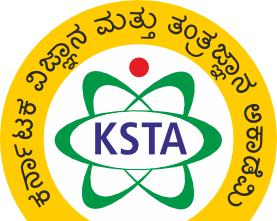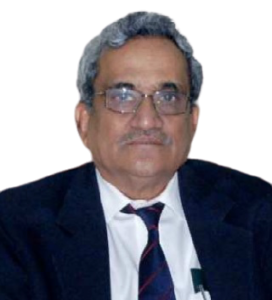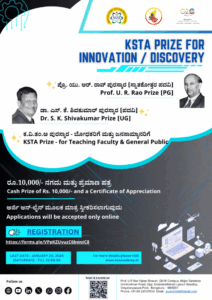Impact of COVID-19 on Agriculture and Way Forward – Prof. K. Narayana Gowda & Prof. Rajendra Prasad
7 min readEvery sector is impacted due to COVID-19, more seriously agriculture and allied sectors. Farmers were continuously facing wrath of marketing of many farm produces over the decades. During the COVID-19, the problem has aggravated to the extent of many farmers not harvesting their farm produces such as fruits, vegetables, flowers, etc., in majority of cases, the prices offered was not covering even the cost of cultivation. In extreme cases, large number of farmers committed suicide and there are no documents to take stock of such farmers either in Karnataka or at the national level. Although the Government of Karnataka has offered some compensation to such farmers in the last two months, but it was a meager amount and it is difficult to compensate the loss since it runs to several thousands of crores.
Yet another unprecedented situation happened is reversal migration. Many youth who left the villages (making villages old age homes) for various reasons have come back to the villages. These youth left villages mainly because farming was not a remunerative enterprise, besides not getting alliance, lack of assured and dependable timely technical guidance, poor amenities in rural areas.
Due to migration in some areas during COVID-19, farmers also suffered in carrying out timely farm operations particularly harvesting in sugarcane and other crops.
Preamble: It is difficult to provide total solutions to all these problems due to COVID-19 impact, which is increasing day by day. An attempt has been made to provide feasible solutions with least investment and based on the successful experiences at University of Agricultural Sciences, Bangalore [UAS(B)].
Food and nutrition security should be given top most priority, reason being it is only healthy food that can provide immunity to all the citizens of the country. Therefore, every effort should be made to maintain the required food production as well as nutritionally rich farm produces including milk, meat, fish and so on.
I. Reversal migration
Majority of the youth who have come back are willing to stay in the villages because of bad experiences in urban environment. These are landless, less landed and even average land holding family youth migrated on the one hand, low and medium educated youth on the other hand.
All these youth who have small and marginal holdings are to be tailored with integrated farming. KVKs in the respective districts to be given mandate to organize training cum exposure visits to integrated farms in their area. UAS, Bangalore has recognized and awarded one each farm youth and farm women practicing Integrated Farming in the Krishimela every year since 2011. These awarded youths are available in every Panchayat and their experience be shared for the newly trained youth. Such trained youth should be supported by all the development departments. More emphasis need to be given for these families on dairy, backyard poultry, sheep, goatary, piggery, apiary, mushroom cultivation, besides cereals, pulses and oil seeds, tree mulberry, fodder cultivation, perennial trees planting such as jack fruit, jamoon, etc., and a combination of these enterprises for each family. This process would help in stabalising the economy, continuous employment, minimizing cost of production, food and nutrition security.
II. Value Addition and Processing (VAP)
The biggest opportunity for the state to provide employment to unemployed, underemployed migrants, and increased additional assured income to farmers is through VAP. It is said very often that State as well as country is loosing annually huge post harvest losses. Even the attention given by successive governments is not encouraging either because of poor policies or not addressing end to end issues.
There are many farm producers such as bio-fuels, tamarind are not harvested to the extent of two third, jackfruit nearly 50 per cent, many fruits and vegetables in varying degrees. The exact data both on quantity and economic loss needs to be generated.
The model evolved by UAS (B) for bio-fuels, tamarind, jackfruit and coconut can be replicated for these crops across the state and with some modifications to other similar crops.
The most important feature of the model, procurement is being done through Milk Producers Co-operative Society (MPCS) at 5 – 8% overhead cost besides organizing the farmers into groups. MPCS works 2 hours in the morning and 2 hours in the evening, relatively free between 10 AM to 3 PM. This facility should be used with an MOU between Karnataka Milk Federation (KMF) and other institutions, which are working at the grass root level for procuring most of the farm produces rather than creating another infrastructure facilities.
These models are available with UAS (B) and the details will be shared if the state government desires. The identified youth and Self Help Groups (SHGs) may be trained in KVKs, provide support from the respective development departments and other institutions such as NABARD, Financial institutions, etc.
III. A) Threshing yard and custom hire services
According to latest estimates, India is loosing annually more than one lakh crore due to post harvest losses. The post harvest losses in Karnataka certainly runs to several thousands of crores annually although the accurate data is lacking.
In the yester years, every family use to have a threshing yard for threshing their farm produces. In the recent years, most majority of farmers have opted for threshing on roads across the country because of increasing number of small and marginal holdings besides cost of establishing threshing yard individually. This action of the farmers has not only resulted in huge loss of grains, desperate sale due to fear of quality being affected when threshing is being done during rainy seasons due to limited storage facility, quality of grains as well as fodder due to mix of petrol, diesel, oil, urine, dung, etc. This type of grains are consumed by human beings and fodder by animals have resulted in many health hazards.
Therefore, it is proposed to establish one threshing yard in every Panchayat initially and thereafter it could be extended to other villages of the panchayat in phase wise.
Establishment of threshing yard can be done with the help of NERAGA and Pradhan Mantri Yantra Dhara Yojane. Nominal budget be provided to establish low cost sheds, compound, storage structures and other purposes. Mechanism be evolved to sale all Minimum Support Price (MSP) declared farm produces at Panchayat level. Apart from threshing, the facility could also be used for sports and cultural programmes in the Panchayat.
Custom hire services may also be taken up for ploughing, sowing, pitting, transplanting, weeding, spraying, harvesting, transporting etc., at Panchayat level.
Majority of landless, less landed youth and SHGs be involved in threshing cum custom hire services. Training for these youth and SHGs be provided in KVKs with the help of RUDSETI and Farm Machinery Manufacturers on operation, maintenance and repairs.
Once, this is commissioned in each Panchayat, this will increase the income of farmers, provide quality grains to consumers, quality fodder to animals, employment to 50 to 60 youth and 25 – 30 SHGs almost round the year. Many old age families struggling for labour to take up various farm operations will help them to take up timely farm operations, minimize theft related problems and social harmony in the villages.
III. B) Best use of Maize fodder
Maize is cultivated in Karnataka in an area of 14.38 lakh ha. during 2019-20.The area under Maize area is increasing continuously year after year particularly in the transition belt of Karnataka. But the uncomfortable part is, once Maize cob is harvested the fodder stalk is left underutilized. Annually, it runs to several lakh tonnes but there is no exact data on the quantity of loss. During summer months and in the years of drought, huge investment is made on import of fodder from neighbouring states. dairy animals in urban areas are struggling for quality fodder.
Therefore, it is proposed to establish one large scale Silage unit in areas where large scale Maize fodder being wasted in the state. This initiative will provide quality fodder to dairy animals, additional income to Maize growers and employment to unemployed youth.
IV. Attracting and Retaining Youth in Agriculture (ARYA)
ICAR is implementing ARYA through KVKs in the country. During 2015, it was started in 25 KVKs with the main objective of identifying such interventions considered to be more profitable and capable of providing assured income to farm youth. With encouraging results of providing additional income and employment to many youths inspiring them to stay back in villages, ICAR extended ARYA during 2018 to 100 districts across country and implemented through KVKs. During this year (2020) it is proposed to implement in 500 KVKs.
In fact, in the recently held national ARYA Review Workshop meeting organized by ICAR on 16.06.2020, I was suggesting that all the 718 KVKs in the country to be covered under ARYA at a time when majority of youth have come back to the villages due to COVID-19. KVKs have special advantage in training farm youth in integrated farming and VAP in a variety of enterprises due to multidisciplinary team of specialists working in KVK system.
Strongly urge the state government to support through additional grants for 33 KVKs functioning in the state of Karnataka to increase the coverage of more number of youth to take up new enterprises to enhance their income and employment opportunities, when reversal migration has taken place large scale in the state also.
V. Recruitment and posting of Raitha Mitrtas at the Panchayat Level
Farmers were satisfied with the technical guidance and service rendered by Gramasevak and later Agricultural Assistant at the Panchayat level. Shifting of head quarters to Hobli level was not much useful to small and marginal farmers who constitute more than 90% as on today who are finding difficulty to visit Hobli level for various purposes. Therefore, Raitha Mittras may be appointed on temporary basis as desired by the Hon’ble Minister for Agriculture GOK, at the earliest, impart training on job responsibility and commissioned to work at the Panchayat level. This arrangement will enthuse, inspire and provide timely guidance and support to all farm families at the Panchayat level particularly to those who have come back with high expectations.
University will be happy to provide the technical help required in these areas for effective implementation by the state government.
– Prof. K. Narayana Gowda
Former Vice Chancellor, UAS (B), Bengaluru
knarayanagowda@yahoo.co.in
and
– Prof. Rajendra Prasad
Vice Chancellor, UAS (B), Bengaluru
srprasad1989@yahoo.co.in; vcuasb1964@gmail.com






